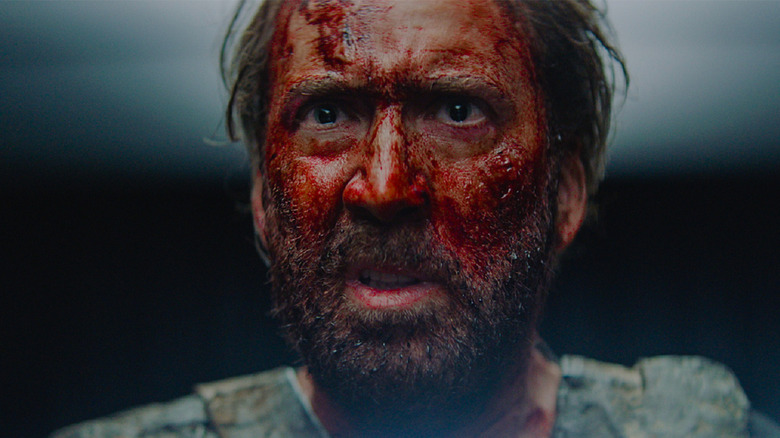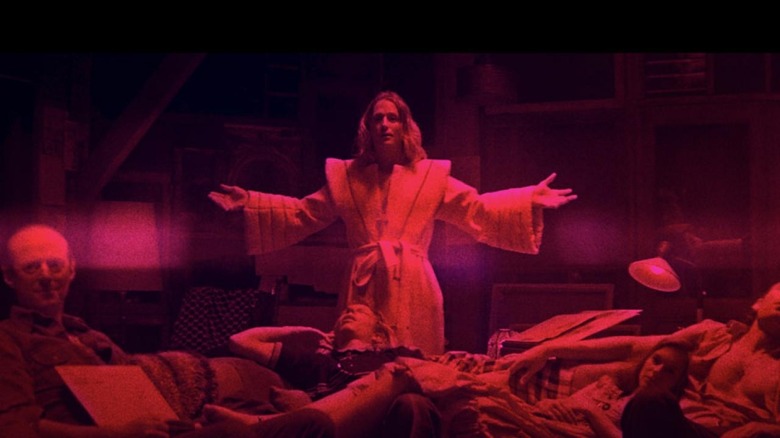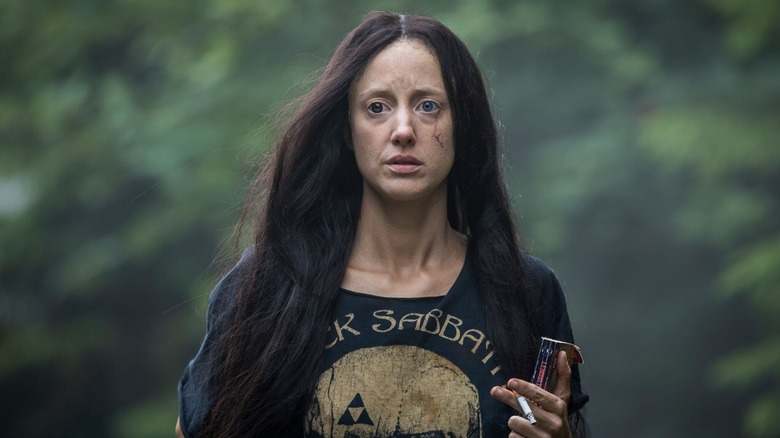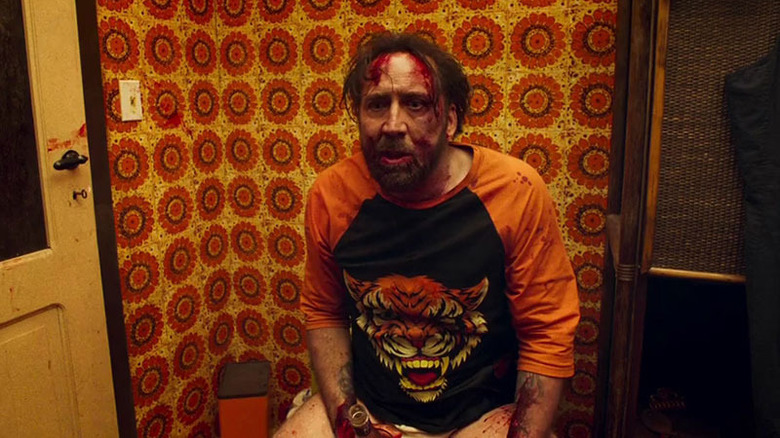The Ending Of Mandy Explained
Although he has an Oscar for acting, Nicolas Cage isn't often considered one of the greatest actors of his generation. These days, he's known for making bad movies with some frequency. There are times, though, when Cage teams up with writers and directors who know how to channel his unique energy to make something truly special. Cage is a wild man, and he has the ability to give a performance that is both human and totally over the top.
That's exactly the kind of work that the actor does in "Mandy," a 2018 film by director Panos Cosmatos. In the film, Cage plays Red Miller, a lumberjack living in the middle of nowhere in 1983 with his wife Mandy Bloom (Andrea Riseborough). When Mandy is abducted and eventually burned alive by members of a cult, Red goes on a revenge mission to avenge the murder of his wife. Along the way, he has at least one chainsaw fight.
The movie's ending is fittingly bizarre, and it left many wondering what exactly it was supposed to mean.
Red takes some LSD early on in his revenge mission
"Mandy" ends after Cage tracks down the cult leader and kills both him and the rest of his cult. Then, on his drive away from the compound where they were, Red sees visions of Mandy, first on the day they met and then sitting next to him in the car.
In evaluating the ending of "Mandy," it's important to note that Red takes LSD pretty early on in his night of blood-soaked revenge. He is initially captured by a biker gang who Jeremiah Sand (Linus Roache), the leader of the cult, recruited to help him with his kidnapping plot. Before Red is captured, though, he learns that the biker gang sampled some bad LSD, and rumor has it that it caused them to go insane.
As he makes his escape from the biker gang, Red takes some of that same LSD, putting the events of the rest of the movie very much in question. Although we do see Red experience some intense visions that are clearly unreal, the rest of the movie may all be an extended vision that's caused by the LSD. It's also possible that the biker gang killed Red and the rest of the film is a fantasy he has while he's dying.
Mandy is an intentionally ambiguous movie
Although the LSD undoubtedly has some effect on Red (it slurs his voice and seems to give him enough strength to crush a man's skull with his bare hands), it's up to the viewer to decide exactly how much of what happens to Red is real. We know that Mandy is actually dead, which means that the visions Red has of her at the end of the film aren't real.
What matters more than what actually happened, though, is what it means for Red. In seeing Mandy whole and happy during the film's final minutes, Red has achieved either madness or peace. The smile that Cage gives when Riseborough appears sitting next to him is truly deranged, but it's a smile of joy nonetheless. At the end of his quest for vengeance, Red appears to have found his own version of peace, as strange as it may look to the rest of us.
Mandy is about recovering from severe trauma
Plenty of people watched "Mandy" for the violent spectacle, but there's another way of looking at the film as an exorcism of sorts. After the severe trauma that Red experiences at the beginning of the movie, he's not just seeking vengeance on behalf of his wife. What he's actually trying to do is come face to face with the lingering demons he has as a result of the violence perpetrated against him.
Whether he really killed all the people we see him kill, saw it in a vision, or was actually killed by the bikers when he was captured, the second half of "Mandy" is about Red dealing with what happened to him. It's a battle for his soul, and it's one that the ending makes clear he's won. Red may never have the happy life he led with his wife at the beginning of the film back, but he's successfully dealt with what happened to him and appears ready to move forward with his life, or his death — just as soon as he's washed off all the blood.



